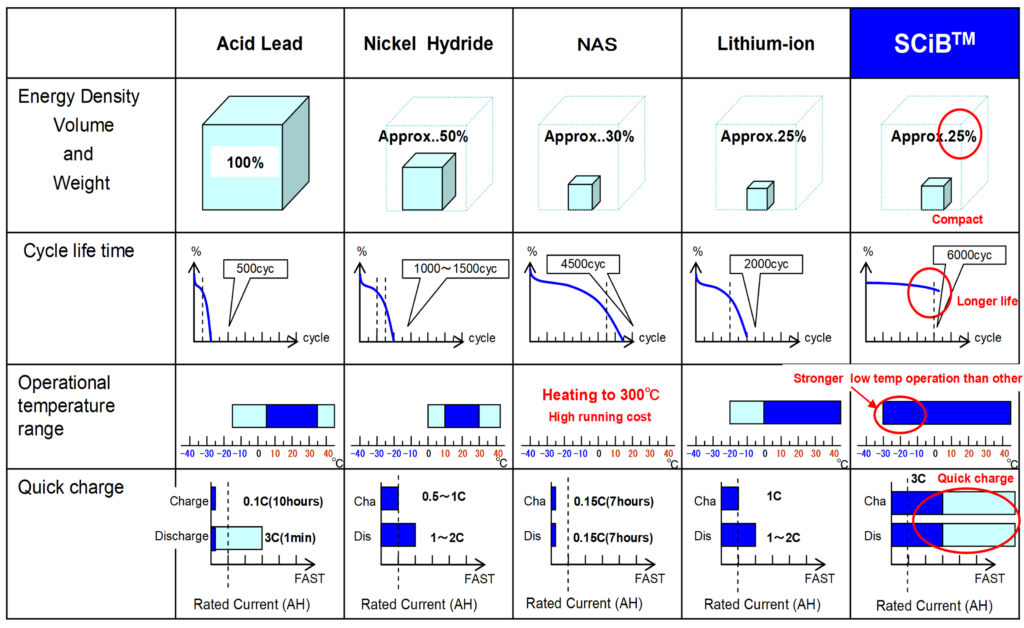Click here if you missed the previous parts of this article: part I
Battery Lifetime Data
Toshiba’s SCiB™ battery has undergone significant amount of testing that assures its performance and capability over the entire lifetime. The SCiB™ provides a capacity recovery rate of over 80% after 10,000 charge-discharge cycles with the full SOC range (0-100%) as shown in Figure 5. Moreover, if SCiB™ is used within a limited SOC range, outstandingly long cycle life (or almost no degradation) will be expected as shown in Figure 6.



(Upper: 1C, Lower: 3C)
Calendar Life of SCiB™ Battery at 90% SOC and Minimal Cycling
Toshiba’s SCiB™ has undergone recovery discharge capacity test at 90% SOC, 35°C and minimal cycling. The SCiB provides a capacity recovery rate of about 98% after 600 days as shown in Figure 7.

Given that the test temperature in Figure 7 is more severe than the requirement (20°C to 25°C), it is expected to have a better performance at 25°C.
Chemical Composition of the SCiB™
Compared to other battery chemistries, the SCiB™ has a very high performance and safety level due to the advanced materials and chemistry used in the battery. The chemical composition of each cell consists of (Refer to Appendix B for the Product Safety Data Sheet):
| Chemical Name | Weight percentage% |
| Complex oxide positive active material including lithium, nickel, and the other elements | 22-32% |
| Lithium Titanate | 22-32% |
| Electrolyte solvent (main components are cyclic and linear carbonates) | 10-20% |
| Electrolyte salt (Lithium salt of fluoro-complex compound) | Li in electrolyte: 0.1-0.2 F in electrolyte: 1.5-2.5 |
Comparison with Other Battery Technology
With this advance technology, the SCiB™ offers superior capability in 4 major areas: Energy Density, Lifetime, Operational Temperature and the Speed of Charging. The table below shows the comparison between the SCiB™ and other battery chemistries:

Temperature Dependencies
SCiB™ provides sufficient discharge capacity at various temperatures ranging from ice-cold -30℃. This makes SCiB™ suitable for applications over a wide range of temperature.

Charge Characteristics of the Battery Cell
In automotive, the amount of time spent in charging the vehicle is a critical factor. In this case, the SCiB™ is capable to operate at high C-rates, significantly reducing the amount of time spent charging.

The SCiB™ battery technology delivers:
- Fast charge rates (80% charge in 6 minutes).
- High input/output power densities, comparable to capacitors.
- Safe operation due to lower operating temperature and increased thermal stability.
Written by Fabio Muzio, from Toshiba